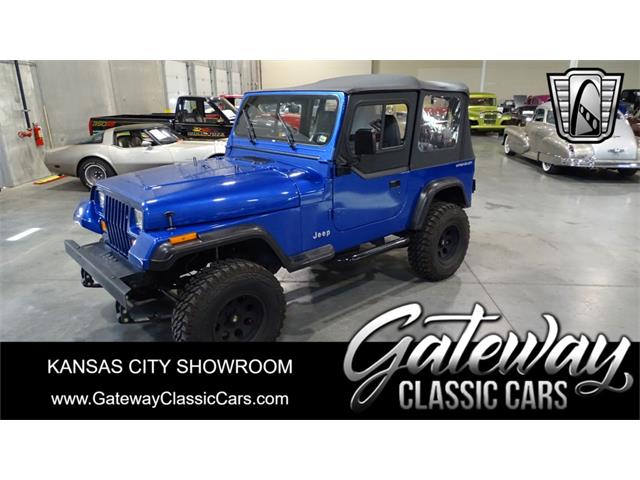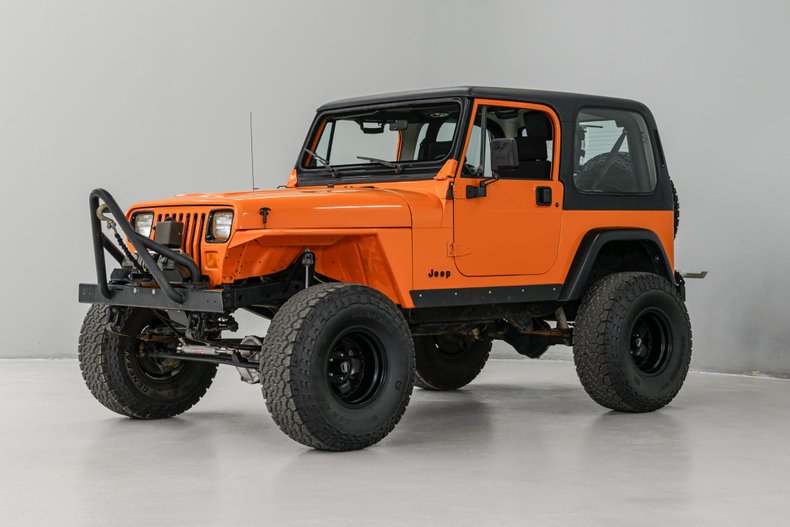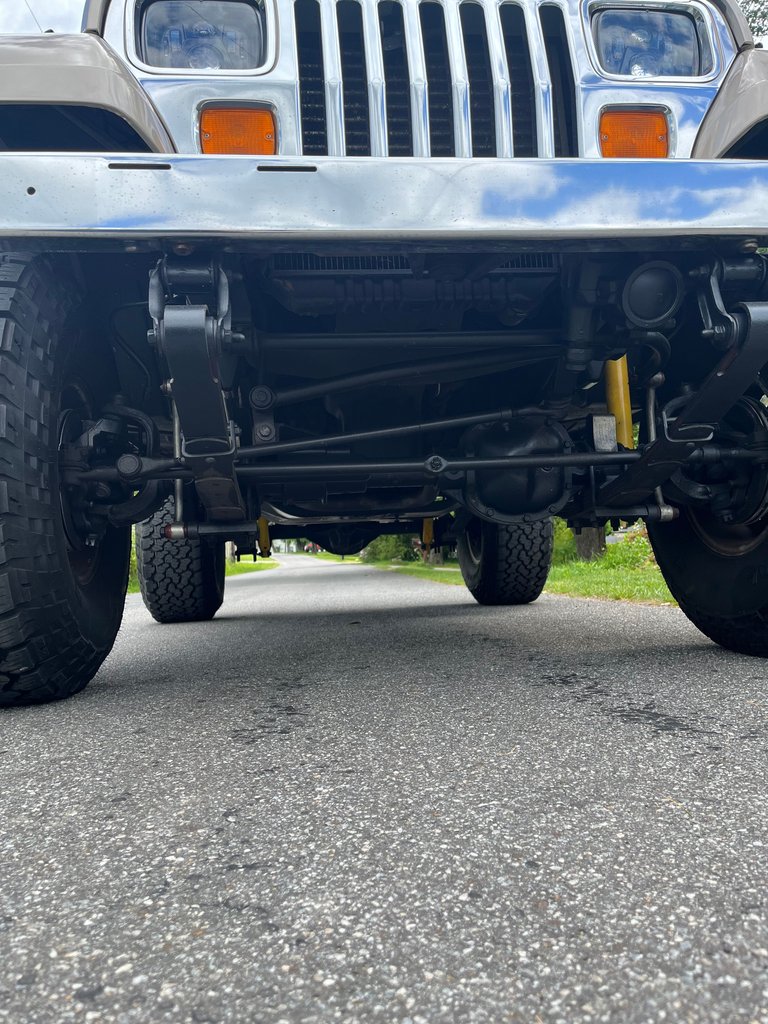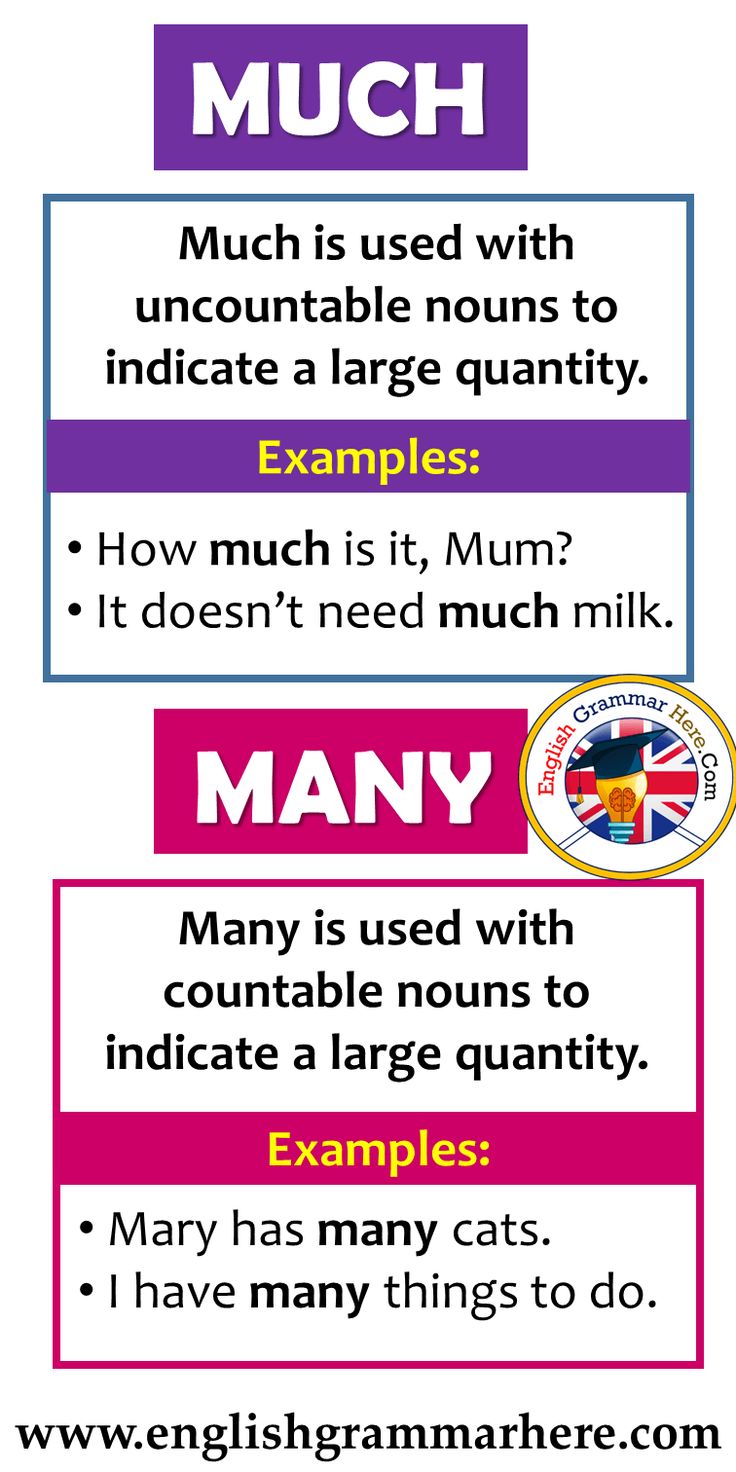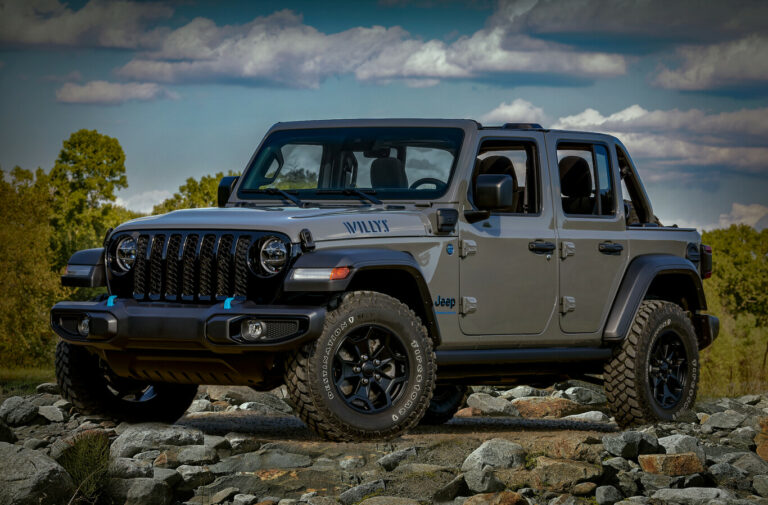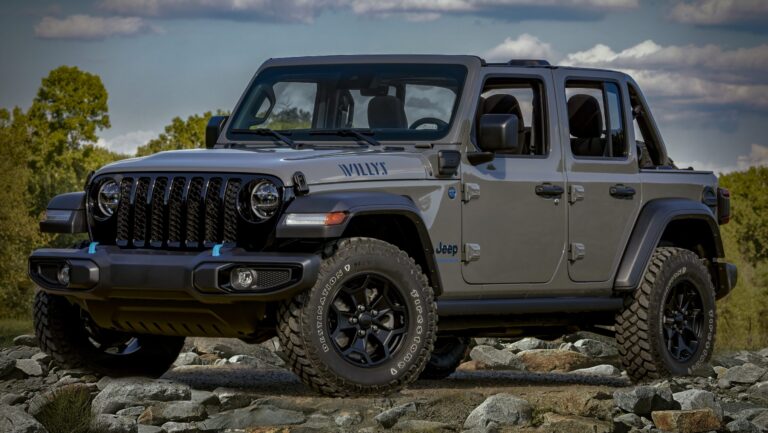1994 Jeep Wrangler Transmission For Sale: Keeping the Legend Alive
1994 Jeep Wrangler Transmission For Sale: Keeping the Legend Alive jeeps.truckstrend.com
The 1994 Jeep Wrangler YJ, with its iconic square headlights and rugged appeal, holds a special place in the hearts of off-road enthusiasts and classic car lovers alike. Renowned for its simplicity, durability, and go-anywhere attitude, the YJ generation embodies the spirit of adventure. However, like any vehicle approaching its third decade, components eventually wear out. Among the most critical and complex parts to address is the transmission. For owners of a beloved ’94 YJ facing shifting issues, slipping gears, or complete transmission failure, the search for a "1994 Jeep Wrangler Transmission For Sale" becomes a paramount mission. This comprehensive guide will navigate the intricacies of finding, purchasing, and understanding the vital heart of your vintage Jeep.
Understanding the 1994 Jeep Wrangler Transmissions
1994 Jeep Wrangler Transmission For Sale: Keeping the Legend Alive
Before embarking on your search, it’s crucial to understand the specific transmissions that came standard in the 1994 Jeep Wrangler YJ. Compatibility is key, as installing the wrong unit will lead to significant headaches and wasted resources. The YJ Wrangler was offered with two engine options, and each was paired with specific manual and automatic transmissions:
- 2.5L 4-Cylinder Engine:
- Manual Transmission: AX-5 (5-speed manual) – A light-duty transmission designed for the smaller engine, often identifiable by its aluminum casing and external slave cylinder.
- Automatic Transmission: 30RH (A904) (3-speed automatic) – A robust, simple, and durable unit, well-suited for the 4-cylinder’s power output.
- 4.0L 6-Cylinder Engine:
- Manual Transmission: AX-15 (5-speed manual) – A heavier-duty transmission compared to the AX-5, built to handle the increased torque of the 4.0L engine. It’s also an aluminum case transmission.
- Automatic Transmission: 32RH (A999) (3-speed automatic) – A beefier version of the 30RH, designed to cope with the 4.0L’s greater power.

Knowing your Jeep’s engine size (which can be found on the VIN or under the hood) is the first step in identifying the correct transmission type. Attempting to mate an AX-5 to a 4.0L, for instance, is a recipe for premature failure due to insufficient strength. Common issues leading to replacement include excessive mileage, lack of proper fluid changes, hard off-road use, or manufacturing defects that become apparent over time.
Why Invest in a Replacement Transmission?
The decision to replace a transmission in a classic vehicle like a 1994 YJ Wrangler often boils down to several compelling reasons:
- Cost-Effectiveness: Compared to purchasing a newer vehicle or even a complete engine swap, replacing a transmission is often a more economical solution to extend your Jeep’s life.
- Preserving Originality: For enthusiasts, maintaining as much of the original vehicle as possible is important. A period-correct transmission keeps the YJ true to its roots.
- Sentimental Value: Many YJ owners have a deep emotional connection to their Jeeps. A transmission replacement means keeping a beloved part of their history on the road.
- DIY Project Potential: For the mechanically inclined, a transmission swap can be a rewarding project, offering a deeper understanding of their vehicle.
Where to Find a 1994 Jeep Wrangler Transmission For Sale
The market for vintage Jeep parts is diverse, offering several avenues for finding a suitable transmission:
- Salvage Yards/Junkyards: These are often the most budget-friendly option for used transmissions.
- Pros: Low cost, immediate availability for local finds, potential to inspect the part in person.
- Cons: Condition is highly variable, no warranty, history unknown, requires careful inspection for signs of wear, damage, or neglect.
- Online Marketplaces (eBay, Craigslist, Facebook Marketplace): A vast selection from individual sellers and smaller businesses.
- Pros: Wide reach, competitive pricing, ability to compare multiple options.
- Cons: Higher risk of misrepresentation, shipping costs can be substantial, inability to physically inspect before purchase, limited recourse if issues arise. Always use secure payment methods and verify seller reputation.
- Specialized Jeep Parts Retailers/Rebuilders: These businesses focus specifically on Jeep components, often offering rebuilt or remanufactured units.
- Pros: Higher quality control, often come with a warranty (ranging from 90 days to 1 year or more), expert advice, peace of mind.
- Cons: Generally the most expensive option, but the added reliability and warranty often justify the cost.
- Jeep Forums and Communities: Online forums dedicated to Jeep Wranglers can be excellent resources for leads.
- Pros: Connect with other enthusiasts who might be selling parts or know reputable sources, access to collective knowledge and advice.
- Cons: Less formal, "buyer beware" applies, deals are often local.
- Local Transmission Shops: Many reputable shops have connections to parts suppliers or may even offer in-house rebuilding services.
- Pros: Professional assessment, often come with installation services and a combined warranty.
- Cons: Can be more expensive than sourcing the part yourself.
Key Considerations When Purchasing
Once you’ve identified potential sources, several critical factors must guide your purchase decision:
- Compatibility: Re-emphasize engine size (2.5L vs. 4.0L) and transmission type (manual vs. automatic). Double-check part numbers if possible.
- Condition: New, Rebuilt, or Used?
- New: Extremely rare for a 1994 model and prohibitively expensive if found. Likely a modern aftermarket reproduction.
- Rebuilt/Remanufactured: This is often the sweet spot. A reputable rebuilder disassembles the unit, replaces worn components (seals, gaskets, bearings, clutches, synchronizers), inspects hard parts, and tests the transmission. Look for detailed descriptions of what was replaced and what testing was performed (e.g., dyno tested).
- Used: The most budget-friendly but highest risk. If buying used, inquire about the donor vehicle’s mileage, reason for being junked, and if the transmission was tested before removal. Look for clean fluid, absence of burnt smells, and no excessive play in shafts.
- Warranty: This is paramount, especially for rebuilt units. Understand the duration (e.g., 6 months, 1 year) and what it covers (parts, labor, shipping). A good warranty signifies the rebuilder’s confidence in their work. Used transmissions rarely come with a warranty beyond a basic "it worked when removed."
- Included Components: Does the sale include necessary ancillary parts like the bell housing, transfer case adapter, torque converter (for automatics), or shifter assembly? These can add significant cost if purchased separately.
- Shipping and Logistics: Transmissions are heavy. Freight shipping is typical for online purchases, adding substantial cost. Factor this into your budget. Local pickup can save money but limits your options.
Installation Tips and Post-Installation Care
Whether you’re a seasoned DIY mechanic or planning to hire a professional, proper installation and post-care are vital for your "new" transmission’s longevity.
- DIY vs. Professional: A transmission swap is a significant undertaking requiring specific tools (transmission jack, specialized sockets) and mechanical aptitude. If you’re unsure, or lack the necessary equipment, professional installation is highly recommended.
- Fluid and Filter: Always use fresh, high-quality transmission fluid of the correct type (ATF+3/4 for automatics, specific gear oil for manuals like GL-3/4 for AX-15/AX-5). Replace the filter for automatics. Never reuse old fluid.
- Mounts: Inspect and replace worn motor and transmission mounts. New mounts reduce vibration and stress on the drivetrain.
- Transfer Case: While the transmission is out, it’s a perfect time to inspect the transfer case. Check for leaks, excessive play, and consider replacing its input and output seals.
- Drive Shafts: Inspect U-joints on both drive shafts for wear and replace if necessary.
- Break-in Period: After installation, drive gently for the first few hundred miles. Avoid aggressive acceleration, heavy towing, or extreme off-roading. Listen for unusual noises and check for fluid leaks regularly.
- Regular Maintenance: Adhere to the manufacturer’s recommended fluid change intervals. This is the single most important factor in extending transmission life.
Estimated Price Range for 1994 Jeep Wrangler Transmissions
Prices can vary significantly based on condition, warranty, seller, and whether ancillary components are included. This table provides a general estimate:
| Transmission Type | Condition | Estimated Price Range (USD) | Notes |
|---|---|---|---|
| AX-5 (2.5L Manual) | Used | $300 – $700 | High variability in condition; no warranty typical. Buyer beware. |
| Rebuilt | $800 – $1,500 | Often includes new seals, bearings, synchros; typically comes with a 6-12 month warranty. | |
| AX-15 (4.0L Manual) | Used | $400 – $900 | As with AX-5, condition varies. |
| Rebuilt | $950 – $1,800 | Comprehensive rebuild with warranty. | |
| 30RH (2.5L Auto) | Used | $350 – $800 | May or may not include torque converter. |
| Rebuilt | $900 – $1,600 | Includes new clutches, bands, seals; comes with remanufactured torque converter; warranty usually 6-12 months. | |
| 32RH (4.0L Auto) | Used | $450 – $950 | May or may not include torque converter. |
| Rebuilt | $1,000 – $1,900 | Includes new clutches, bands, seals; comes with remanufactured torque converter; warranty usually 6-12 months. |
Note: These are estimates for the transmission unit only and do not typically include shipping costs, core charges (if applicable), or installation labor.
Frequently Asked Questions (FAQ)
Q1: How do I know which transmission my 1994 YJ has?
A1: The easiest way is by your engine size: 2.5L 4-cylinder typically has an AX-5 manual or 30RH automatic. The 4.0L 6-cylinder uses an AX-15 manual or 32RH automatic. You can also check your VIN (Vehicle Identification Number) or visually inspect the transmission itself for casting numbers or tags.
Q2: Is it better to buy a used or rebuilt transmission?
A2: For peace of mind and long-term reliability, a professionally rebuilt transmission is almost always the better choice. It comes with a warranty and has had critical wear components replaced. Used transmissions are cheaper but carry a significant risk of hidden problems and typically offer no warranty.
Q3: What’s the average lifespan of these transmissions?
A3: With proper maintenance (regular fluid and filter changes) and normal driving, these transmissions can last well over 150,000-200,000 miles. Hard off-roading, lack of fluid changes, or heavy towing can significantly reduce their lifespan.
Q4: Can I upgrade my transmission, for example, from an automatic to a manual?
A4: Yes, it’s possible to swap transmission types or even install a stronger aftermarket unit, but it’s a complex and expensive undertaking. It involves changing the pedal assembly, steering column, transfer case input, driveshafts, and potentially the computer (for later models, less so for ’94 YJ). It’s generally not recommended for a direct replacement scenario unless you have extensive mechanical expertise and a significant budget.
Q5: What are common signs of transmission failure?
A5: Common signs include delayed engagement (especially into gear from park/neutral), slipping gears (engine revs but vehicle doesn’t accelerate proportionally), harsh or clunking shifts, grinding noises (especially in manual transmissions), fluid leaks, burnt fluid smell, and sometimes a "check engine" light (though less common for purely mechanical issues on a ’94 YJ).
Q6: Do I need to replace the torque converter with an automatic transmission?
A6: Yes, it is highly recommended to replace the torque converter whenever you replace an automatic transmission. A failing torque converter can quickly damage a new or rebuilt transmission. Most rebuilt automatic transmissions come with a remanufactured torque converter.
Conclusion
Finding a "1994 Jeep Wrangler Transmission For Sale" is more than just a transaction; it’s an investment in keeping a piece of automotive history alive and ready for its next adventure. By understanding the different transmission types, carefully considering your purchasing options, prioritizing compatibility and warranty, and committing to proper installation and maintenance, you can ensure your beloved YJ continues to conquer trails and turn heads for years to come. The effort to source the right transmission pays dividends in reliability and the enduring joy of driving a classic Jeep.
